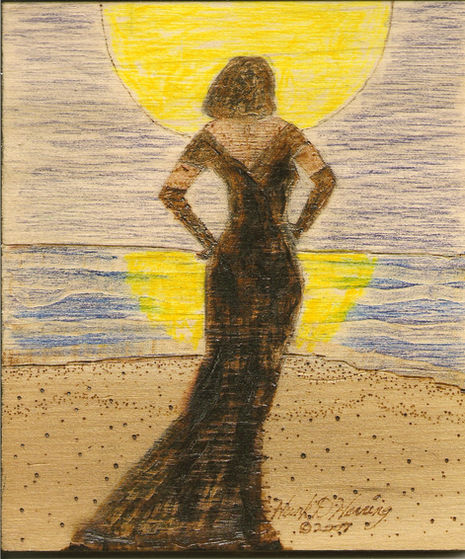Hank D. Herring is the owner of the Green Herring Art and Framing Studio, on Bay
Street in Beaufort, SC. Hank learned about art at an early age from watching and
being instructed by artistic family members and school art programs. He won
numerous science fair awards in school by using wood and metal as his medium.
He completed his apprenticeship as a machinist before leaving high school.
After high school, Hank enlisted in the U.S. Marine Corps for a twenty year career.
His occupational specialty was machinist. Working in the machinist field allowed
him to learn more creative ways to manipulate metals, wood, plastic, glass and
composite materials into art. During his time in the military, Hank made a
correlation between found objects and life lessons that he expresses in his art to
this day. He continues to learn new techniques and to work in many mediums,
always fascinated with new concepts of expressing the imagination.
“Using found objects "rescued materials" in my work reminds me that the future
can be built by using the past, whether from advice or physical objects”. His work
with rescued materials illustrates that beauty can be found in most anything;
“however, it does require the right attitude, desire, and a healthy imagination. We
have become a throw away society, yet we all should do our part to protect our
environment, for now and the future".
Hank continually shows his passion for helping the community and the arts
through mentoring programs, public events, and forums. Hank has mentored in
public and private schools. He served as a teaching artist for the Kennedy Centers
Teaching Artist Program and the Low Country Arts Integration Project with
Beaufort County, South Carolina School District. He served as a board member of
the South Carolina Arts Alliance (SCAA) and as a consultant on local arts
organizations’ special projects.
Hank's work has been featured in museums and galleries throughout the United
States. His work is in Canada, Great Britain, Ireland, Japan and Australia. He
utilizes cultural symbols to create wooden stamps for artists working in batik,
printmaking, quilting and ceramics. He uses the stamps with cultural symbols to
teach educational standards in schools, to demonstrate and instruct at art events
with other artists, youth, physically challenged and senior groups.
“We are only limited by our imaginations. I believe, art should stir the soul and
ignite the imagination”.
“I’m just passing it forward, it is not mine to keep. I’m paying back what was
invested in me, hoping the return is worthy of my investors/ancestors“.




